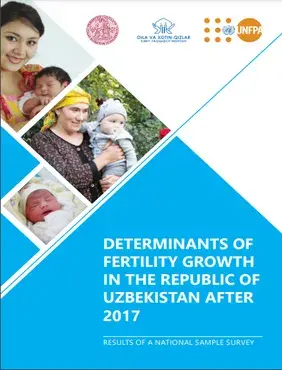The survey examined changes in fertility rates and the reproductive desires of women in Uzbekistan, and explored underlying factors including cultural and societal norms, economic factors, and access to family planning, reproductive health care, and education. The survey results suggest that several factors have contributed to the growth of fertility rates in Uzbekistan after 2017. The most significant one is the fulfilment of the reproductive desires of women, thanks to Uzbekistan’s unprecedented social and economic transformation which has resulted in increased confidence in the future. At the same time it is important to note that the younger generation of women plan to have fewer children, compared to middle-aged women, underlining that the long-term population trend will remain dynamic and reflect deeplyrooted social, cultural and economic factors.
Who we are
DETERMINANTS OF FERTILITY GROWTH IN THE REPUBLIC OF UZBEKISTAN AFTER 2017

Publisher
Number of pages
38
Author
UNFPA
Publication
DETERMINANTS OF FERTILITY GROWTH IN THE REPUBLIC OF UZBEKISTAN AFTER 2017
Publication date
04 October 2023

